Hydraulic presses have emerged as indispensable tools in the modern manufacturing landscape, providing the force and precision required for a vast array of applications. This article explores the intricacies of hydraulic press manufacturing, highlighting the key components, design principles, and the transformative impact of automation. It also examines the challenges faced by the industry and delves into the future trends that are shaping thepress market. With a focus on innovation and the evolving role of technology, this piece aims to provide a comprehensive overview of this vital sector.
Understanding the Basics of Hydraulic Press Manufacturing
Hydraulic press manufacturing is a complex yet fascinating process that plays a crucial role in the industrial world. At its core, a hydraulic press uses hydraulic fluid to generate pressure, which is then used to apply force to various materials. This technology has evolved over the years, becoming more efficient and versatile. Let’s delve into the basics of how these remarkable machines are made.
The heart of any hydraulic press is its hydraulic system, which is composed of a pump, reservoir, and a set of hydraulic cylinders. The pump, often an electric motor-driven pump, draws fluid from the reservoir and then pressurizes it. This pressurized fluid is then channeled through hoses and valves to the hydraulic cylinders, where the actual work is done.
The manufacturing process begins with the design phase, where engineers use computer-aided design (CAD) software to create detailed plans for the press. These designs take into account the required tonnage, dimensions, and other specifications. The design process also involves considering factors such as the material to be pressed, the cycle time, and the overall efficiency of the press.
Once the design is finalized, the next step is to source the raw materials. High-quality steel is commonly used for the frame and components due to its strength and durability. Other materials like cast iron and aluminum may also be used for specific parts. The materials are then transported to the manufacturing facility.
In the manufacturing shop, the steel is cut and shaped into the required components using plasma cutting, laser cutting, or oxy-fuel torches. These components include the base, pillars, ram, and sliding surfaces. Each piece is meticulously inspected for quality and dimensions to ensure they fit together correctly.
The frame of the hydraulic press is assembled using precision bolts and(welding) techniques. The frame serves as the backbone of the machine and must be strong enough to support the press force and withstand the rigors of continuous use. The pillars, which are vertical structural elements, are often machined to very tight tolerances to ensure the ram moves smoothly.
The ram is a crucial part of the hydraulic press, as it is the part that moves and applies the pressure. It is typically made from high-strength steel and is designed to be robust enough to withstand the force required for pressing. The ram is fitted with sliding surfaces, which can be made of various materials such as hardened steel or Teflon-coated metal to reduce friction and wear.
The hydraulic cylinders are custom-fabricated to match the specifications of the press. These cylinders are the workhorses of the hydraulic press, converting hydraulic pressure into mechanical force. The cylinders are designed with precision, and their seals are critical to maintaining the integrity of the hydraulic system.
After the mechanical components are assembled, the hydraulic system is installed. This involves fitting the hydraulic pump, reservoir, valves, and control panel. The system is then flushed and filled with hydraulic oil, which serves as the working fluid. Special care is taken to ensure that all components are properly aligned and sealed to prevent leaks.
Before the press is ready for use, it undergoes rigorous testing. The tonnage of the press is verified using calibrated equipment to ensure it meets the specified requirements. The press is also checked for leaks and proper operation of the hydraulic system. Safety features such as emergency stops and pressure relief valves are tested to ensure they function correctly.
In addition to the mechanical and hydraulic components, the control system is an essential part of the hydraulic press. Modern hydraulic presses often come with programmable logic controllers (PLCs) or computer numerical control (CNC) systems that allow for precise and repeatable operation. These systems can be programmed to perform a wide range of tasks, from simple to complex press cycles.
The final phase of hydraulic press manufacturing is packaging and shipping. The press is carefully wrapped to protect it during transit, and all necessary documentation, including user manuals and safety guidelines, is included. The completed hydraulic press is then delivered to the customer, ready for installation and operation.
In conclusion, hydraulic press manufacturing is a meticulous process that combines advanced engineering, precision manufacturing, and quality control. From the design phase to the final product, each step is crucial in ensuring that the hydraulic press will perform its intended function with reliability and efficiency.
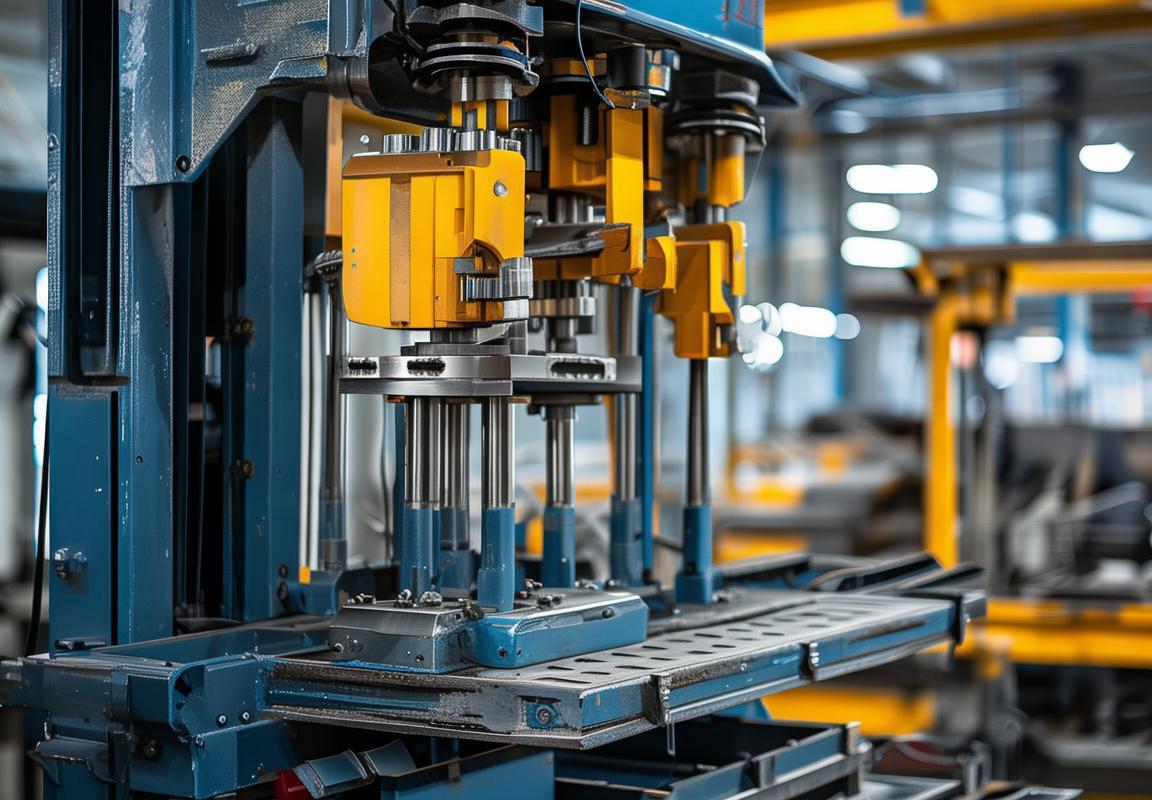
The Evolution of Hydraulic Presses in Modern Industry
The evolution of hydraulic presses in modern industry is a testament to human ingenuity and the relentless pursuit of efficiency and precision. Initially developed in the early 19th century, these machines have come a long way, transforming manufacturing processes across various sectors.
Hydraulic presses first gained prominence in the metalworking industry. Early models were relatively simple, using the principle of Pascal’s law, which states that pressure applied to a fluid is transmitted equally in all directions. These early presses were used for forging, bending, and stamping operations, where the sheer force of the press was crucial to shape metal into the desired forms.
As the industrial age progressed, so did the hydraulic press. The introduction of cast iron and the development of more sophisticated materials allowed for the creation of larger and more powerful machines. The 20th century saw a significant leap in hydraulic press technology with the advent of hydraulic cylinders and pumps, which greatly increased the force and speed of the presses.
The introduction of hydraulics into press design marked a turning point. Before hydraulics, presses were often limited by mechanical linkages and complex gear systems, which could be cumbersome and prone to wear. Hydraulics, on the other hand, provided a smooth, controlled force that could be easily modulated and directed.
With the growth of the automotive industry, hydraulic presses became even more crucial. They were essential for the production of car bodies, engine blocks, and other components that required high levels of precision and strength. The ability to apply pressure uniformly across a large area made hydraulic presses ideal for these applications.
The evolution of control systems has also played a significant role in the development of hydraulic presses. Initially, presses were controlled manually, with operators having to adjust valves and levers to control the pressure and movement of the press. However, advancements in electronics and computer technology led to the development of programmable logic controllers (PLCs) and computer numerical control (CNC) systems.
These advancements allowed for greater precision and automation in the manufacturing process. Operators could now program the press to perform complex sequences of operations, reducing the need for manual intervention and increasing productivity. The integration of sensors and feedback mechanisms also improved the accuracy and consistency of the presses, ensuring that each part met the stringent quality standards required in modern manufacturing.
Another significant evolution in hydraulic press technology is the move towards energy efficiency. With increasing environmental concerns and rising energy costs, manufacturers have been seeking ways to reduce the energy consumption of their machinery. This has led to the development of more efficient pumps, motors, and control systems that optimize the use of hydraulic fluid and minimize waste.
The development of multi-axis hydraulic presses has also been a game-changer. These presses can move in multiple directions, allowing for more complex forming operations that were previously impossible. This capability has opened up new possibilities in the aerospace, defense, and other high-tech industries, where intricate parts require precise shaping and assembly.
In the realm of materials, the evolution of hydraulic presses has been closely tied to the development of new alloys and plastics. As these materials have become more common in manufacturing, so too have the presses been adapted to handle the unique properties of these materials, whether it’s the high strength of titanium or the flexibility of certain plastics.
Today, hydraulic presses are not just limited to metalworking. They are used in the production of ceramics, composites, and even food processing. The versatility of these machines, combined with their ability to handle a wide range of forces and speeds, makes them indispensable in many different manufacturing processes.
The evolution of hydraulic presses is a story of constant improvement, driven by the needs of industry and the innovations of engineers. From their humble beginnings to the sophisticated machines of today, hydraulic presses have become a cornerstone of modern manufacturing, shaping the world we live in with their powerful, precise force.
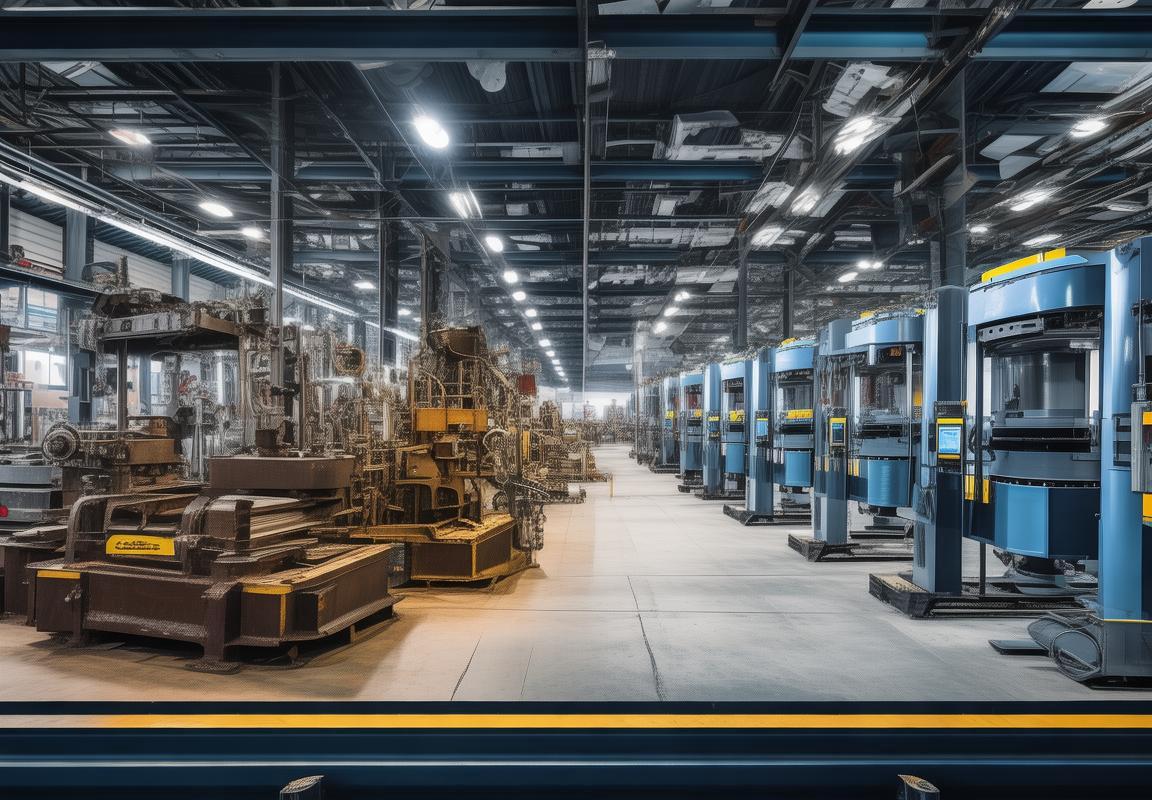
Key Components and Design Principles in Hydraulic Presses
Hydraulic presses are marvels of engineering, combining precision and power to shape, form, and forge materials across a multitude of industries. At the heart of these robust machines are several key components and design principles that ensure their efficiency and reliability. Let’s delve into the essential elements that make up a hydraulic press.
The hydraulic cylinder is perhaps the most critical component of a hydraulic press. It converts hydraulic energy into mechanical force, allowing the press to exert tremendous pressure on the workpiece. These cylinders are typically made from high-strength steel and are designed to withstand the immense forces exerted during the pressing process. They come in various sizes and configurations, such as single-acting and double-acting cylinders, depending on the application’s requirements.
The hydraulic pump is the heart of the hydraulic system, responsible for circulating the hydraulic fluid and maintaining the pressure required for the press to function. There are several types of pumps used in hydraulic press manufacturing, including gear pumps, vane pumps, and axial-piston pumps. Each type has its advantages and is chosen based on factors like flow rate, pressure, and efficiency.
The hydraulic valve is another crucial component, controlling the flow of hydraulic fluid within the system. Directional valves direct the fluid to the appropriate cylinder, while pressure relief valves protect the system from overpressure situations. Check valves prevent backflow, ensuring that the fluid flows in the intended direction. The design of these valves must be precise to maintain the desired pressure and flow rate throughout the press’s operation.
The accumulator is a vital part of the hydraulic system, storing hydraulic energy in the form of pressurized fluid. This stored energy can be used to maintain pressure during extended cycles or to provide a quick response when high forces are required. Accumulators come in various sizes and types, including bladder accumulators and diaphragm accumulators, each with its own advantages in different applications.
The control panel is the brain of the hydraulic press, allowing operators to monitor and control the machine’s functions. It typically includes a display screen, buttons, and switches that enable the operator to set parameters such as pressure, speed, and cycle time. Advanced control panels may also offer programmable logic control (PLC) capabilities, allowing for complex sequences and automation.
The frame of the hydraulic press is the backbone that supports all the components and ensures structural integrity. It must be robust enough to withstand the forces exerted by the press during operation. Frames are usually made from heavy-duty steel and can be designed as either fixed or movable, depending on the specific requirements of the application.
The worktable is the surface where the workpiece is placed and pressed. It must be flat, durable, and capable of withstanding the pressure exerted by the press. Worktables are available in various materials, including steel, cast iron, and granite, each offering different characteristics such as hardness, thermal expansion, and wear resistance.
Hydraulic presses also feature various auxiliary equipment that enhances their functionality. This includes clamping systems to secure the workpiece, safety guards to protect operators, and hydraulic rams that provide additional force for deep drawing or stamping operations. The design of these auxiliary components must be integrated seamlessly with the main press to ensure optimal performance.
In terms of design principles, hydraulic presses must prioritize safety, efficiency, and ease of maintenance. Safety features, such as emergency stop buttons and pressure relief valves, are essential to prevent accidents. Efficiency is achieved through the use of high-quality materials, precise engineering, and energy-saving technologies. Maintenance is facilitated by accessible components and modular designs that allow for quick repairs and upgrades.
The design of a hydraulic press also involves careful consideration of the application’s specific requirements. Factors such as the type of material being processed, the desired force and speed, and the overall production volume all influence the design choices. Engineers must also account for environmental conditions, such as temperature and humidity, to ensure the press operates reliably over its lifespan.
In conclusion, the key components and design principles of hydraulic presses are a testament to the ingenuity of engineers. From the robust hydraulic cylinder to the sophisticated control panel, each element plays a vital role in the press’s ability to perform its tasks accurately and safely. As technology continues to advance, we can expect to see further innovations in the design and functionality of hydraulic presses, making them even more indispensable in modern industry.
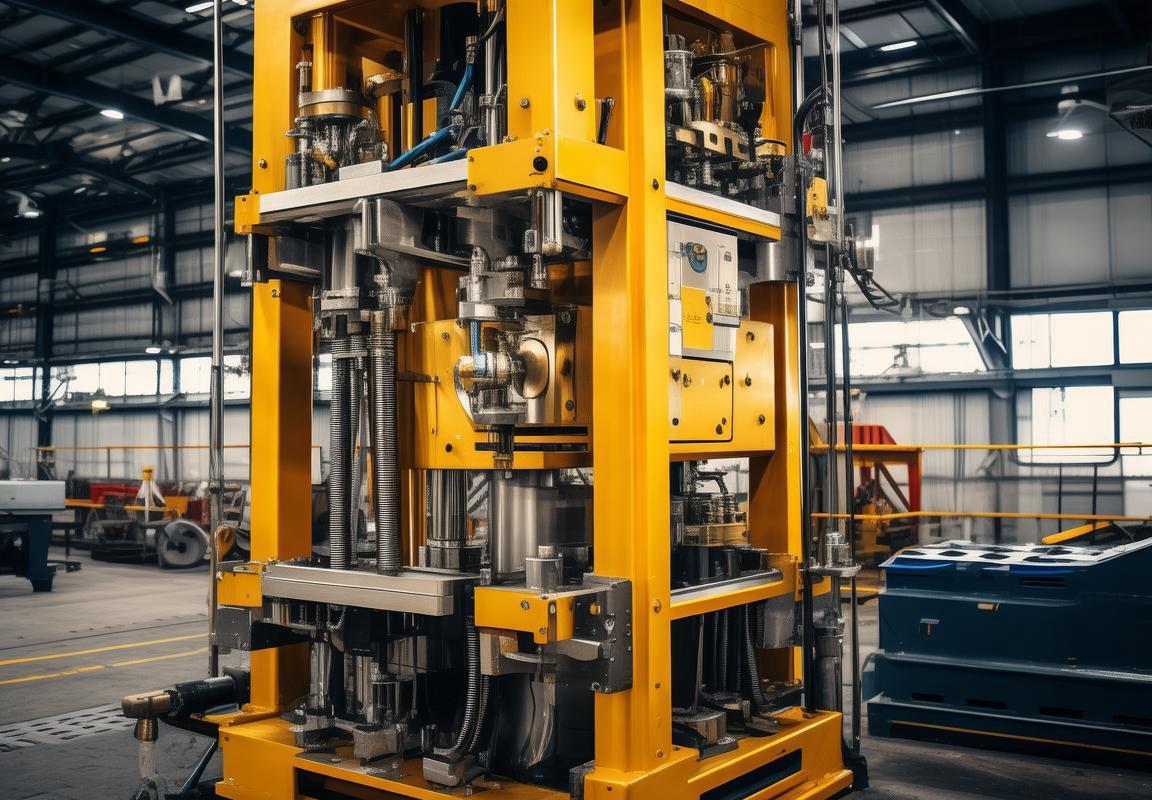
The Manufacturing Process: From Raw Materials to Finish Product
The manufacturing process of hydraulic presses is a meticulous journey that transforms raw materials into robust and precise machines capable of exerting immense force. This intricate process involves several stages, each critical to the final product’s quality and functionality.
The journey begins with the selection of raw materials, which are the building blocks of any hydraulic press. These materials typically include high-quality steel, aluminum, or other alloys that can withstand the extreme pressure and temperature conditions. The choice of material depends on the intended application and the specifications of the press.
Once the materials are sourced, they undergo a series of preprocessing steps. Steel, for instance, might be subjected to heat treatment to improve its strength and ductility. This involves heating the steel to a specific temperature and then slowly cooling it, a process known as annealing. Aluminum, on the other hand, is often extruded into the desired shapes and sizes, as it is more malleable and easier to work with.
After preprocessing, the raw materials are cut into smaller components that will eventually form the press. Precision cutting is crucial to ensure that each part fits together correctly. Techniques such as laser cutting, water jet cutting, or plasma cutting are employed to achieve the necessary accuracy and efficiency.
The components are then assembled, a process that requires careful attention to detail. In a hydraulic press, several key components come together to create the press’s functionality. These include the hydraulic cylinder, which contains the hydraulic fluid and converts its pressure into mechanical force; the frame, which provides structural support and houses the hydraulic system; and the ram, which is the moving part that applies the force to the workpiece.
The hydraulic cylinder is a marvel of engineering, consisting of a barrel, piston, and rod. The barrel is sealed and contains the hydraulic fluid, which is pressurized by a pump. When the pump activates, the fluid pushes against the piston, causing it to move. The rod, connected to the piston, transmits the force to the ram. The design of the cylinder must account for factors like fluid flow rate, pressure, and the type of hydraulic fluid used, which can be mineral oil, water-glycol, or synthetic oil, depending on the application.
The frame is typically made of steel and is designed to be rigid and stable. It must support the weight of the press and the force exerted by the ram. The frame also houses the hydraulic system, which includes the pump, valves, filters, and other components necessary for controlling the flow and pressure of the hydraulic fluid.
The ram is a critical component that delivers the actual force required for forming, bending, or cutting metal. Its design varies depending on the application, with some rams being straight and others contoured to fit the shape of the workpiece. The ram must be capable of withstanding high-pressure forces and must be guided and supported properly to ensure accurate positioning.
Once the major components are assembled, the hydraulic press is subjected to rigorous testing. This includes pressure tests to ensure the integrity of the cylinder and frame, leak tests to check for any fluid leaks, and functional tests to verify that the press operates smoothly and safely. Any defects or issues found during these tests are addressed before the press moves to the next stage.
After passing the tests, the hydraulic press is prepared for painting or coating. This not only enhances the appearance of the machine but also provides a protective layer against corrosion and environmental factors. The surface is cleaned and prepared, and then the paint or coating is applied, either through a liquid spray, powder coating, or electrostatic application.
Finally, the hydraulic press is disassembled and reassembled, ensuring that all components are properly aligned and functioning as intended. The final assembly is followed by a thorough inspection and, if necessary, fine-tuning of the press’s controls and sensors. Once all checks are complete, the hydraulic press is packaged and prepared for shipment to the customer.
This intricate process, from raw materials to finish product, showcases the precision and dedication required to manufacture a high-quality hydraulic press. Each step is carefully controlled to ensure that the final product meets the stringent demands of modern industry, delivering years of reliable service to its users.
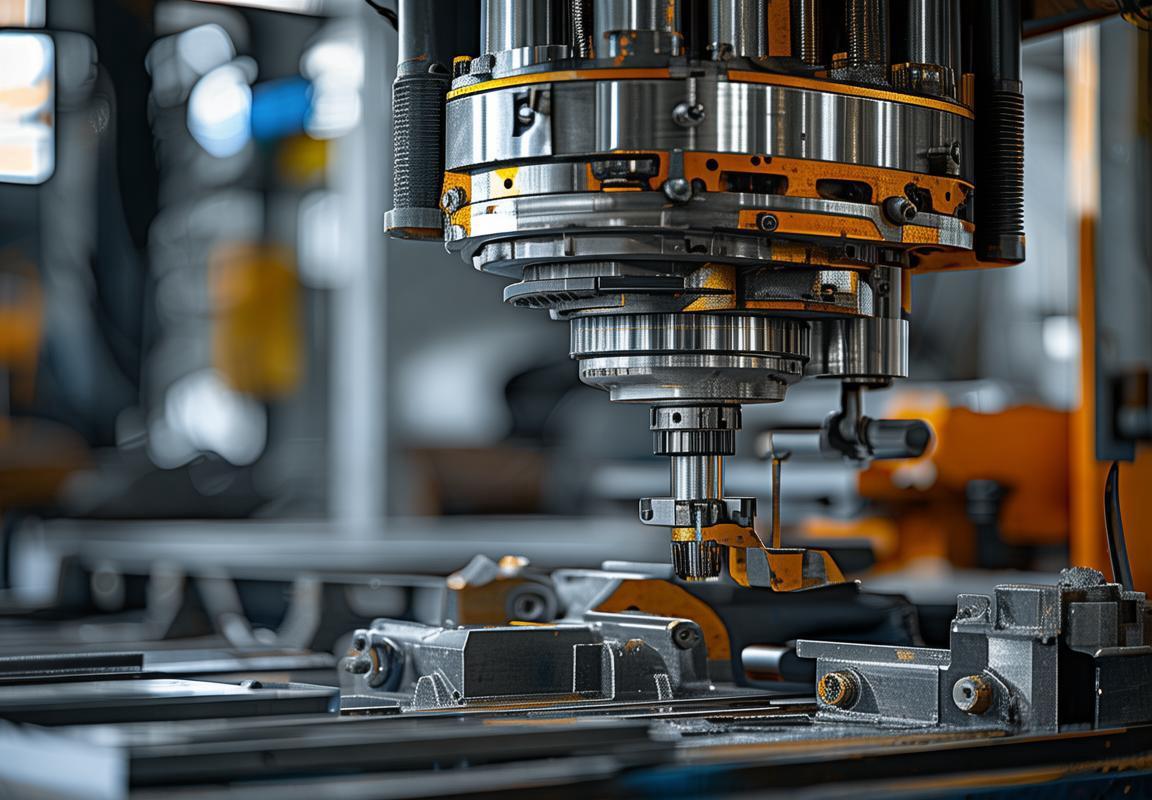
Quality Control and Safety Measures in Hydraulic Press Production
In the realm of hydraulic press production, ensuring quality and safety is paramount. Here’s an in-depth look at the various measures and practices that are integral to maintaining high standards throughout the manufacturing process.
The meticulous inspection of components begins even before they are assembled. Each part, from the smallest cylinder seal to the largest frame component, undergoes a thorough examination for any signs of defects or wear. This initial check is crucial, as any substandard parts can compromise the integrity of the final product.
Hydraulic presses rely on precise pressure to perform their tasks, and the calibration of pressure systems is a critical aspect of quality control. Engineers use state-of-the-art testing equipment to verify that the pressure within the system is consistent and within the specified parameters. This ensures that the press can consistently deliver the necessary force for its intended application.
Safety is not just a concern but a legal requirement in manufacturing environments. The installation of hydraulic presses involves a series of safety measures that are designed to prevent accidents. These include emergency stop buttons, safety guards, and interlocks that prevent the press from operating unless all safety features are engaged. Regular maintenance checks of these safety mechanisms are essential to ensure they remain functional.
The manufacturing process also includes rigorous testing of the hydraulic system itself. Leak tests are conducted to ensure that there are no vulnerabilities in the seals or hoses that could lead to hydraulic fluid leaks, which can cause fires, damage equipment, or harm workers. These tests are often pressure tests that simulate the operating conditions of the press.
The material used in the construction of hydraulic presses is another area where quality and safety intersect. Steel, the primary material, must meet stringent standards to withstand the immense pressures exerted by the press. Non-destructive testing methods, such as ultrasonic inspection, are employed to detect any internal flaws in the steel before it is used in the manufacturing process.
In the assembly phase, workers are trained to follow strict protocols to ensure that components are correctly aligned and that the press is assembled in the right sequence. Misalignments or incorrect assembly can lead to equipment failure and accidents. Regular training sessions are conducted to reinforce these practices and keep the workforce up-to-date with the latest safety procedures.
Once the hydraulic press is fully assembled, it undergoes a series of performance tests. These tests not only verify the press’s ability to meet its design specifications but also check its reliability under various conditions. For example, the press might be subjected to endurance tests where it operates continuously for extended periods to ensure that it maintains its performance over time.
Environmental considerations are also part of the quality control process. Hydraulic presses can be sensitive to temperature changes, which can affect their performance and longevity. Temperature control systems are installed to regulate the operating environment, preventing overheating and ensuring that the press operates within its optimal range.
The use of advanced software for monitoring and diagnostics is becoming increasingly common in hydraulic press production. These systems can track the performance of the press in real-time, alerting operators to potential issues before they become serious problems. This proactive approach to maintenance not only improves the lifespan of the press but also enhances safety by preventing unexpected breakdowns.
In conclusion, the production of hydraulic presses is a complex process that requires a high level of attention to detail. From the careful selection of materials to the rigorous testing of components and the implementation of safety measures, every step is designed to ensure that the final product is not only of the highest quality but also safe to use. The combination of these efforts creates a robust manufacturing process that stands up to the demands of the modern industrial landscape.
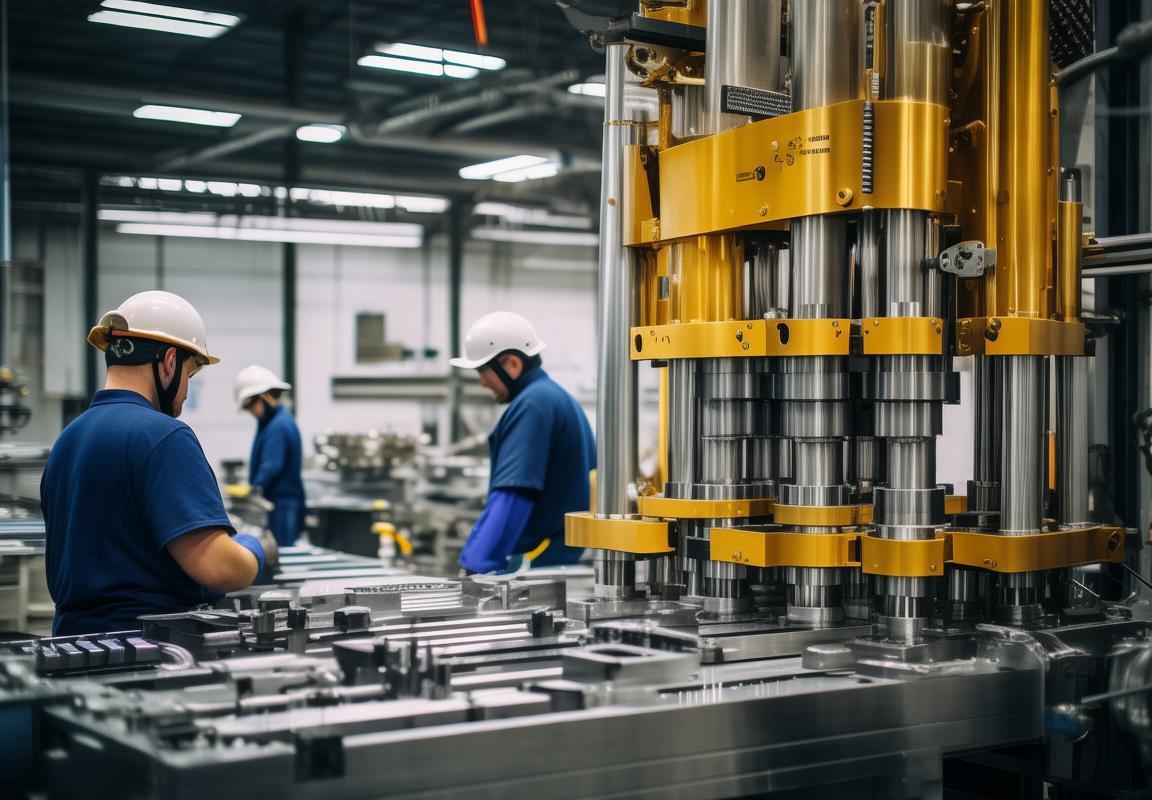
Applications and Industries that Rely on Hydraulic Presses
Hydraulic presses have become an indispensable tool in various industries, offering a combination of power, precision, and reliability. Their applications span from the smallest parts to the largest metal structures, and they play a crucial role in shaping the modern manufacturing landscape. Let’s delve into the diverse industries and applications that rely on hydraulic presses.
In the automotive industry, hydraulic presses are essential for the production of car bodies, doors, hoods, and other structural components. They are used to stamp out intricate shapes from sheets of metal, ensuring the structural integrity and aesthetics of the vehicles. The presses can handle the high tonnages required for these applications, often exceeding 2,000 tons.
The aerospace sector also heavily depends on hydraulic presses for the manufacturing of aircraft components. These presses are used to form complex parts like wing ribs, fuselage sections, and engine components. The precision and consistency they offer are critical in ensuring the safety and performance of aircraft.
In the construction industry, hydraulic presses are employed in the production of precast concrete elements. These elements include beams, columns, slabs, and walls, which are then used in the construction of buildings and infrastructure. The presses can apply the necessary pressure to create the desired shapes and strengths, contributing to the efficiency of the construction process.
The packaging industry uses hydraulic presses for the production of metal cans and containers. These presses are capable of forming the metal into the required shapes with high precision, ensuring the integrity of the packaging. The ability to handle a variety of metals, from steel to aluminum, makes hydraulic presses versatile for different packaging needs.
The electronics industry relies on hydraulic presses for the assembly and formation of intricate components. These presses are used to bond, form, and press together small electronic parts, such as connectors and sensors. The gentle force and precision of hydraulic presses are crucial in maintaining the delicate nature of electronic devices.
In the medical field, hydraulic presses are used in the manufacturing of prosthetics and orthopedic devices. These devices require a high degree of customization and precision, which hydraulic presses can provide. The presses are used to mold and shape materials into the correct form for fitting to a patient’s body.
The pharmaceutical industry also benefits from hydraulic presses, particularly in the production of blister packs and capsules. These presses are used to form the plastic containers that hold tablets and other medications, ensuring the safety and convenience of the packaging.
The food processing industry uses hydraulic presses for the packaging of various products, from meat to cheese. These presses are designed to handle food-grade materials and can apply the necessary pressure to seal and package products, maintaining freshness and safety.
The energy sector relies on hydraulic presses for the production of components for wind turbines and solar panels. These presses are used to form the blades and frames of wind turbines, as well as the frames and panels of solar installations. The strength and durability required for these applications are met by the capabilities of hydraulic presses.
In the transportation industry, hydraulic presses are used in the production of rail cars, buses, and trucks. These presses are capable of forming the metal into the required shapes for the bodies and frames of these vehicles, ensuring their structural integrity.
The military and defense sector also uses hydraulic presses for the production of armaments and equipment. These presses are used to form and shape metals into the necessary components for weapons systems, armor, and other military equipment.
The agricultural industry employs hydraulic presses for the production of machinery parts and equipment. These presses are used to form the metal into the required shapes for tractors, combines, and other agricultural machinery, contributing to the efficiency of farming operations.
The sports and recreational equipment industry also relies on hydraulic presses for the production of items like bicycles, golf clubs, and tennis rackets. These presses are used to form the metal into the complex shapes required for these products, ensuring their performance and durability.
In summary, hydraulic presses find applications in a vast array of industries, from automotive and aerospace to construction and pharmaceuticals. Their ability to handle a wide range of materials and produce precise shapes makes them a cornerstone of modern manufacturing processes. The versatility and power of hydraulic presses continue to drive innovation and efficiency across countless sectors of the global economy.
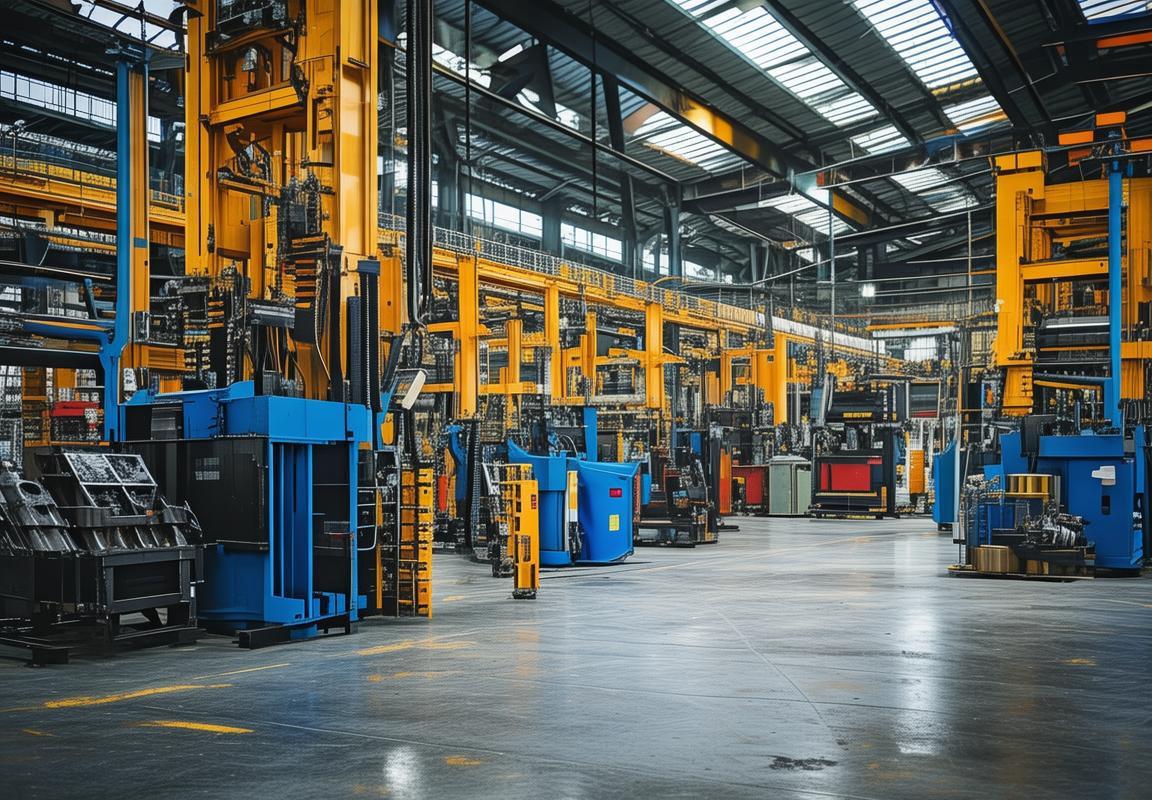
Innovation and Technological Advancements in Hydraulic Presses
Hydraulic presses have come a long way since their inception, and the innovations and technological advancements in this field are nothing short of remarkable. From the basic principles of hydraulics to the cutting-edge solutions of today, let’s delve into how hydraulic presses have evolved and what makes them such a vital tool in various industries.
The integration of digital controls has been a game-changer. Early hydraulic presses were mechanical marvels, relying on manual adjustments and sometimes even steam power. Today, however, the inclusion of digital control systems has transformed the way these machines operate. With precise programming, engineers can set exact pressure, speed, and cycle times, leading to increased efficiency and consistency in production.
Smart sensors have also revolutionized the industry. These devices monitor the performance of hydraulic presses in real-time, providing data on pressure, temperature, and vibration. Such information is crucial for predictive maintenance, allowing manufacturers to address potential issues before they escalate into costly repairs or downtime.
The advent of modular design has allowed for greater flexibility in hydraulic press manufacturing. Modular systems can be customized to suit specific applications, with components that can be easily swapped out or upgraded. This not only enhances the longevity of the presses but also makes them adaptable to evolving production needs.
One of the most significant advancements is the use of high-efficiency hydraulic systems. These systems reduce energy consumption by optimizing fluid flow and minimizing leakage. The result is a more sustainable and cost-effective operation, which is particularly important for manufacturers looking to minimize their environmental footprint.
Another innovation is the development of compact presses. While the traditional hydraulic press is often large and heavy, modern designs have shrunk these machines without compromising on power or performance. Compact presses are ideal for spaces with limited room and can still handle a wide range of tasks, from metal stamping to mold pressing.
The integration of robotics has taken hydraulic press technology to new heights. Collaborative robots, or cobots, can work alongside hydraulic presses to automate tasks that were once labor-intensive. This synergy between man and machine increases productivity and reduces the risk of workplace injuries.
Hydraulic presses have also seen improvements in material handling. Advanced systems now include intelligent grippers and conveyors that can precisely position and manipulate workpieces. This not only enhances the accuracy of the pressing process but also speeds up the overall production cycle.
In terms of energy recovery, modern hydraulic presses are designed to capture and reuse energy that would otherwise be lost during operation. This not only reduces energy costs but also contributes to a more sustainable production process.
One of the most recent innovations is the use of 3D printing in hydraulic press manufacturing. By printing parts directly, manufacturers can create custom components with complex geometries that were once impossible to produce. This not only speeds up the design process but also reduces the need for traditional machining, further cutting down on production time and costs.
The use of advanced materials has also played a crucial role in the evolution of hydraulic presses. High-strength alloys and composites are now used in the construction of these machines, providing greater durability and resilience. This allows presses to handle heavier loads and more demanding applications without degradation over time.
The integration of artificial intelligence (AI) is another forward-thinking development. AI algorithms can analyze data from hydraulic presses to predict maintenance needs, optimize performance, and even suggest improvements to the design. This level of intelligence in hydraulic press technology is poised to lead to even more efficient and reliable machines in the future.
In conclusion, the innovation and technological advancements in hydraulic presses have transformed them from heavy-duty machinery into intelligent, energy-efficient, and versatile tools. As the industry continues to evolve, we can expect even more groundbreaking developments that will further enhance the capabilities of these machines and their role in the manufacturing landscape.
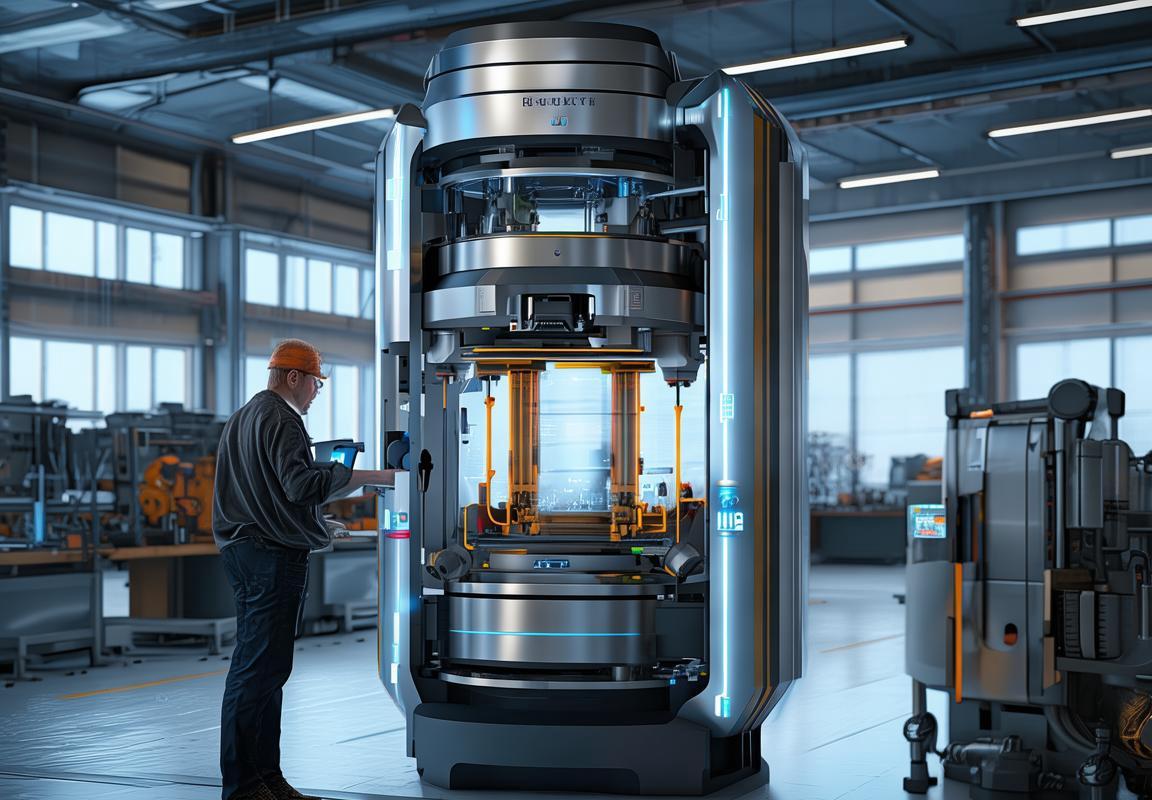
The Role of Automation in Hydraulic Press Manufacturing
In the realm of hydraulic press manufacturing, automation has emerged as a transformative force, reshaping the way these powerful machines are designed, produced, and utilized. The integration of automation into the manufacturing process has not only increased efficiency but also brought about significant improvements in quality and safety. Let’s delve into the various aspects of automation’s role in hydraulic press manufacturing.
Automation has revolutionized the design phase by enabling engineers to simulate and optimize the performance of hydraulic presses before they are even built. Advanced software allows for the creation of 3D models that can predict the behavior of the press under different conditions, ensuring that the final product meets the exacting standards required for its intended application. This virtual prototyping not only saves time and resources but also minimizes the risk of design flaws.
During the manufacturing process, automation has streamlined operations, reducing the need for manual labor and the potential for human error. CNC (Computer Numerical Control) machines are now commonly used to cut, shape, and assemble the various components of hydraulic presses. These machines can work continuously, 24⁄7, with minimal downtime, leading to higher production rates and lower costs.
One of the most significant impacts of automation in hydraulic press manufacturing is the introduction of robotics. Robots are employed for tasks that are too dangerous, repetitive, or require a high degree of precision. For example, welding, which is a critical component in the construction of hydraulic presses, can be performed by robots with precision and consistency that surpasses human capabilities. This not only enhances the structural integrity of the presses but also ensures that all components fit perfectly together.
Quality control is another area where automation has made a substantial difference. Traditional methods of inspecting hydraulic presses for defects required a considerable amount of time and resources. With the advent of automated inspection systems, every aspect of the press can be thoroughly examined for any irregularities. These systems use high-definition cameras and advanced algorithms to detect even the smallest imperfections, such as cracks or misalignments, which might not be visible to the human eye.
Safety is paramount in hydraulic press manufacturing, and automation has played a crucial role in enhancing it. Automated systems can be programmed to detect and respond to potential hazards, such as overloads or equipment malfunctions. In the event of an emergency, these systems can quickly shut down the press, preventing accidents and minimizing damage. Additionally, the use of automated controls ensures that the presses operate within safe parameters, reducing the risk of operator error.
The integration of automation has also led to the development of smart presses that can communicate with other machines and systems on the factory floor. These interconnected devices can exchange data in real-time, allowing for predictive maintenance and optimizing the production process. For instance, sensors within the hydraulic press can monitor the wear and tear of components and alert maintenance teams before a failure occurs, thus preventing costly downtime.
In terms of energy efficiency, automation has been instrumental in reducing the energy consumption of hydraulic presses. Advanced control systems can adjust the pressure and flow rates of hydraulic fluids to match the specific requirements of the task at hand, ensuring that energy is used optimally. This not only reduces the operational costs but also has a positive environmental impact.
The role of automation in hydraulic press manufacturing extends beyond the factory floor. It has also influenced the training of operators. With the help of virtual reality (VR) and augmented reality (AR) technologies, trainees can simulate the operation of hydraulic presses in a safe, controlled environment. This immersive training allows operators to gain practical experience without the risk of accidents or damage to equipment.
As technology continues to advance, the role of automation in hydraulic press manufacturing is likely to evolve further. We can expect to see more sophisticated systems that are capable of learning and adapting to changing conditions, as well as greater integration with other manufacturing technologies. The future of hydraulic press manufacturing is one where automation will continue to be a driving force, pushing the boundaries of efficiency, quality, and safety.

Challenges and Future Trends in the Hydraulic Press Market
The hydraulic press market has faced numerous challenges over the years, but it has also seen remarkable growth and innovation. Understanding these challenges and identifying future trends is crucial for manufacturers and users alike. Here’s a look at some of the key issues and predictions for the.
In the pursuit of efficiency and precision, the hydraulic press market has encountered the challenge of material limitations. Traditional materials like cast iron and steel have long been the backbone of hydraulic press construction, but they are not without their drawbacks. The weight of these materials can limit the mobility of presses, making them less suitable for applications requiring frequent relocation. As a result, there’s been a growing demand for lighter, yet durable materials that can maintain the structural integrity of hydraulic presses.
Energy consumption is another significant challenge. The hydraulic press operates by converting mechanical energy into hydraulic energy, which is then used to perform tasks. However, this conversion process is not 100% efficient, leading to energy losses and increased operational costs. Manufacturers are constantly seeking ways to improve energy efficiency, such as through the use of variable displacement pumps that adjust their output based on demand.
Safety concerns have always been at the forefront of hydraulic press manufacturing. These machines are powerful and capable of exerting tremendous force, which can pose serious risks if not handled properly. As a result, safety features like emergency stop buttons, pressure relief valves, and safety guards are mandatory. The challenge lies in ensuring that these features are reliable and that operators are adequately trained to use them effectively.
Innovation in the hydraulic press market has been driven by the need for customization and adaptability. Many industries require presses that can handle a wide range of materials and tasks, which often means customizing the machine to fit specific needs. This has led to the development of modular designs, allowing users to add or remove components as needed. However, the complexity of these customizations can increase maintenance requirements and the need for specialized knowledge.
Regulatory compliance is another challenge that affects the hydraulic press market. Different regions have their own safety and environmental regulations, which manufacturers must adhere to. This can vary from basic safety standards to more stringent environmental regulations, such as those governing emissions and waste disposal. Keeping up with these regulations is a continuous process and requires a thorough understanding of the legal landscape.
The future of the hydraulic press market is likely to be shaped by advancements in technology and a shift towards more sustainable practices. One trend is the integration of IoT (Internet of Things) and smart sensors, which can provide real-time data on the performance and condition of hydraulic presses. This could lead to predictive maintenance, where potential issues are identified and addressed before they become major problems.
Renewable energy sources are also becoming more prominent in the market. With the push for greener operations, manufacturers are exploring ways to incorporate solar or wind power into hydraulic press systems. This not only reduces the environmental impact but can also lower operational costs in the long run.
Another future trend is the rise of additive manufacturing, or 3D printing, which could revolutionize the production of hydraulic presses. By using 3D printing, manufacturers can create highly complex parts with minimal waste, leading to more efficient production processes. This technology could also enable the creation of custom hydraulic presses at a lower cost and with faster turnaround times.
As the global population continues to grow and the demand for products increases, the hydraulic press market will need to address scalability. This means not only producing more presses but also ensuring that they can be produced in a way that is sustainable and cost-effective. This could involve optimizing supply chains, investing in advanced manufacturing technologies, and adopting lean manufacturing principles.
In conclusion, the hydraulic press market faces a range of challenges, from material limitations and energy consumption to safety and regulatory compliance. However, by embracing innovation and technological advancements, the industry can overcome these obstacles and prepare for a future that is both sustainable and efficient.

Conclusion: The Essential Powerhouse of Manufacturing
In the world of manufacturing, the hydraulic press stands as an essential powerhouse, driving the production of countless products across various industries. Its evolution from a simple machine to a sophisticated tool has been marked by continuous innovation and technological advancements. The hydraulic press’s role in modern manufacturing is not just about the sheer force it generates but also about the precision, efficiency, and adaptability it brings to the production line. Here’s a closer look at the hydraulic press’s journey, its applications, and the future it holds.
The hydraulic press has come a long way since its inception. Initially, it was a straightforward mechanical device used for forging and stamping operations. Over time, engineers have refined its design, incorporating hydraulic systems that offer greater control and power. Today, hydraulic presses are integral to the production of everything from automotive parts to aerospace components, showcasing their versatility and adaptability.
Hydraulic presses are designed with a focus on safety and efficiency. The heart of the machine is the hydraulic cylinder, which converts hydraulic energy into mechanical force. This force is then used to press, bend, or shape materials with incredible precision. The design principles behind these machines involve the careful calculation of pressure, flow rate, and the material properties of the components being worked on.
The manufacturing process of hydraulic presses is a complex blend of engineering and craftsmanship. It begins with selecting the right raw materials, such as high-strength steel for the frame and hydraulic cylinders. These materials are then processed through various stages, including cutting, welding, and heat treatment, to ensure they meet the stringent requirements of the hydraulic press. The precision of the manufacturing process is crucial, as even the smallest error can compromise the performance and safety of the machine.
Quality control is paramount in hydraulic press production. Each component is inspected for defects, and the assembly process is closely monitored to ensure that all parts fit together correctly. Regular testing is conducted to verify the pressure and force capabilities of the press, as well as its overall reliability. Safety measures are also integral to the production process, with protocols in place to prevent accidents and ensure the well-being of workers.
Hydraulic presses find their applications in numerous industries, from automotive to aerospace, and from construction to electronics. In the automotive sector, they are used for forging engine blocks, crankshafts, and other critical components. The aerospace industry relies on hydraulic presses for the production of complex parts that require high levels of precision and strength. Construction companies use them for the manufacturing of concrete products, while electronics manufacturers employ them in the assembly of intricate circuits and components.
Innovation in hydraulic press technology has been a driving force behind their evolution. Advances in materials science have allowed for the development of stronger, lighter materials, which in turn have led to more efficient and powerful presses. The integration of smart sensors and control systems has enhanced the precision and adaptability of hydraulic presses, making them more versatile than ever before.
Automation has played a significant role in the manufacturing of hydraulic presses. Automated assembly lines can produce these machines with unprecedented speed and accuracy. The use of robotics and computer-aided design (CAD) has streamlined the production process, reducing the need for manual labor and minimizing the risk of human error. This has not only increased productivity but has also opened up new possibilities for customization and personalization in hydraulic press design.
Despite the advancements, the hydraulic press market faces several challenges. One of the most significant is the need for energy efficiency. As environmental concerns grow, manufacturers are under pressure to produce hydraulic presses that consume less energy and have a smaller carbon footprint. Additionally, the rise of alternative technologies, such as electric presses, poses a competitive threat to traditional hydraulic presses.
Looking ahead, future trends in the hydraulic press market include the continued integration of automation and smart technology. The development of more efficient hydraulic fluids and materials will also be crucial in driving down energy consumption and improving the lifespan of hydraulic presses. The industry will likely see an increased focus on sustainability, with manufacturers exploring eco-friendly alternatives and recycling programs.
In conclusion, the hydraulic press remains a cornerstone of modern manufacturing. Its ability to apply immense force with precision has made it indispensable in the production of a vast array of products. As technology continues to evolve, the hydraulic press will undoubtedly adapt, offering new solutions to the manufacturing challenges of the future. Its journey from a simple forging tool to a sophisticated industrial machine is a testament to human ingenuity and the relentless pursuit of efficiency and excellence.